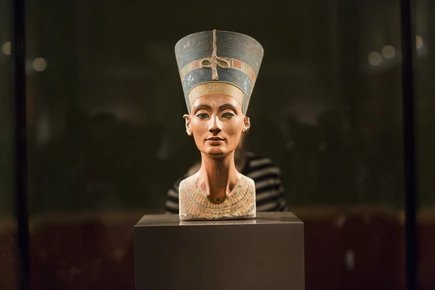
Symphony in C / Fearful Symmetries
George Balanchine's ballet Symphony in C is one of his masterpieces, striking above all for its technical precision, artistic virtuosity, and breathtaking complexity.
Introduced to Georges Bizet's composition by his long-time collaborator Igor Stravinsky, Balanchine choreographed the work as Le Palais de Cristal (The Crystal Palace) in just two weeks in 1947 for the Paris Opera Ballet, where he was ballet master.
When he revived the work the following year for the New York City Ballet on October 11, 1948, he simplified the sets and costumes and changed the title to Symphony in C, derived from the score. This score was composed in 1855, when Bizet was only 17 years old and still a student at the Paris Conservatoire, but was not performed until 1935, long after the composer's death.
In Symphony in C, Balanchine presents the music in four movements, each of which, like a separate ballet, features a different pair of soloists and the corps de ballet. Symphony in C embodies the legacy of a classical dance tradition, while the dancers, through their versatility and energy, lend the performance a special dynamism and vitality.
Christian Spuck's dance piece Fearful Symmetries is dedicated to the composition of the same name by John Adams and brings its rhythmic intensity and energy to life visually. The American composer John Adams is one of the most important representatives of contemporary classical music. He borrowed the title of his work from the poem The Tyger, published by the Englishman William Blake in 1794. However, it wasn't the content of this text that appealed to him, but rather the key phrase "fearful symmetry." This fearful symmetry is reflected in John Adams' repeated melodic and harmonic structures, which he deliberately exaggerates to enhance their effect.
John Adams became known for his operas, which are often based on recent events – among them his first opera, Nixon in China (1987), about the American president's visit to Mao Tse-tung in 1972, and Doctor Atomic (2005), about the physicist Robert Oppenheimer, the father of the atomic bomb. According to Adams himself, the orchestral piece Fearful Symmetries, which is characterized by an energetic soundscape, is closely related to his first opera.
1:30 a.m. including one intermission
Additional information
Participating artists
George Balanchine (Choreographie)
Georges Bizet (Musik)
Elsie Lindström (Kostüme)
Irene Selka (Licht)
Paul Connelly (Musikalische Leitung)
Staatskapelle Berlin
Christian Spuck (Choreographie)
John Adams (Musik)
Rufus Didwiszus (Bühne)
Emma Ryott (Kostüme)



